Physical Address
304 North Cardinal St.
Dorchester Center, MA 02124
(see Fig. 22.1A–E )
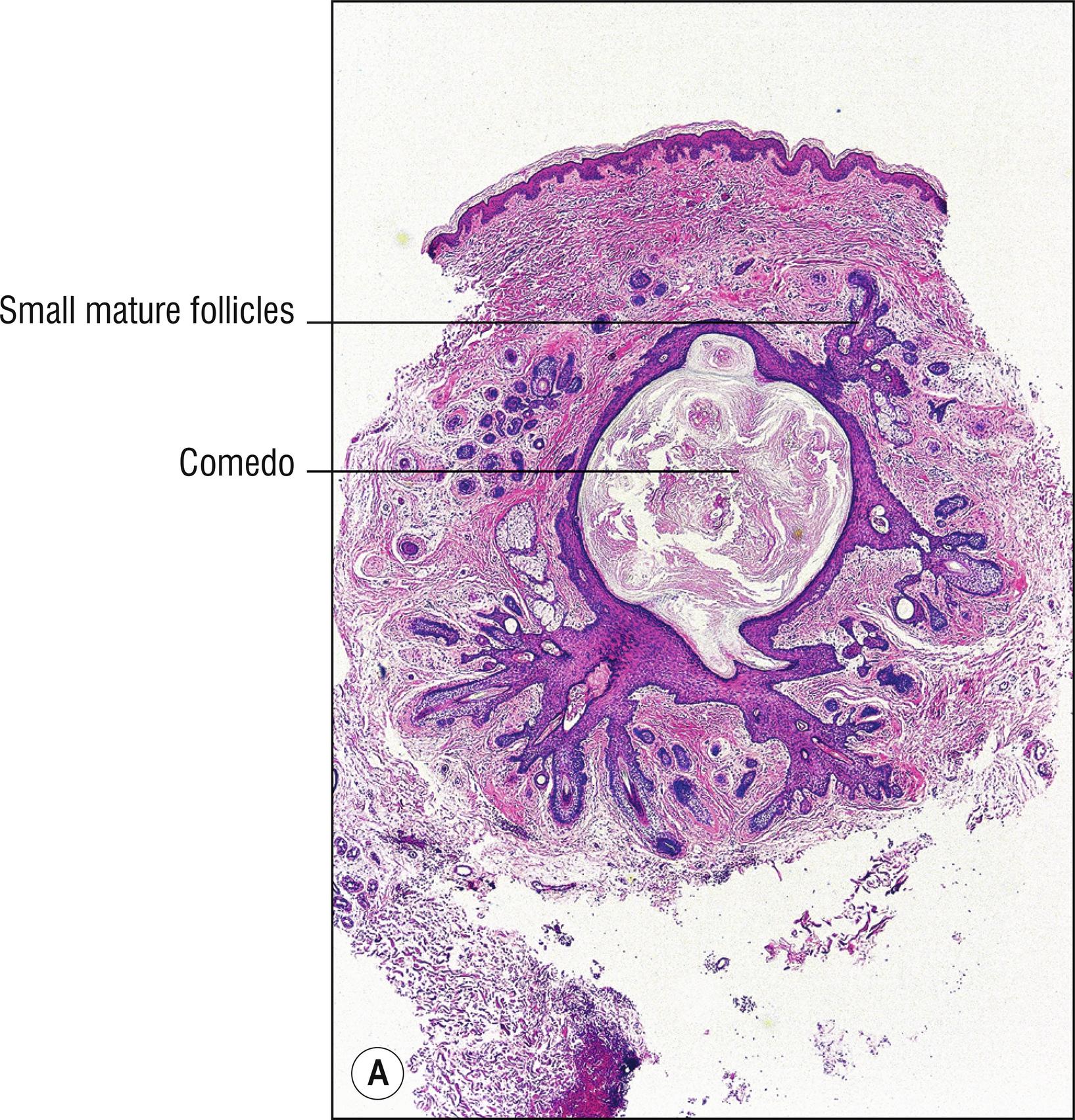
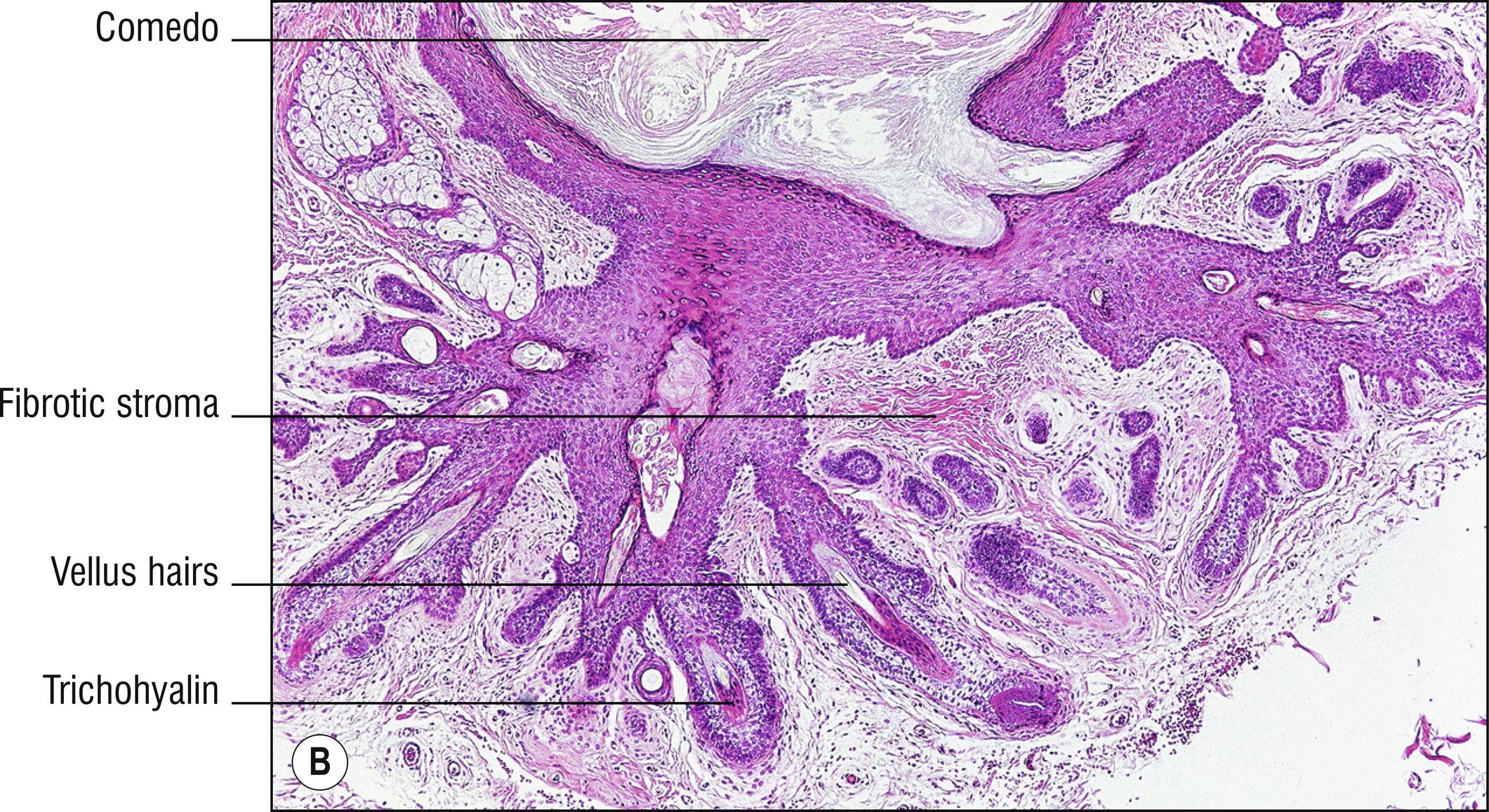
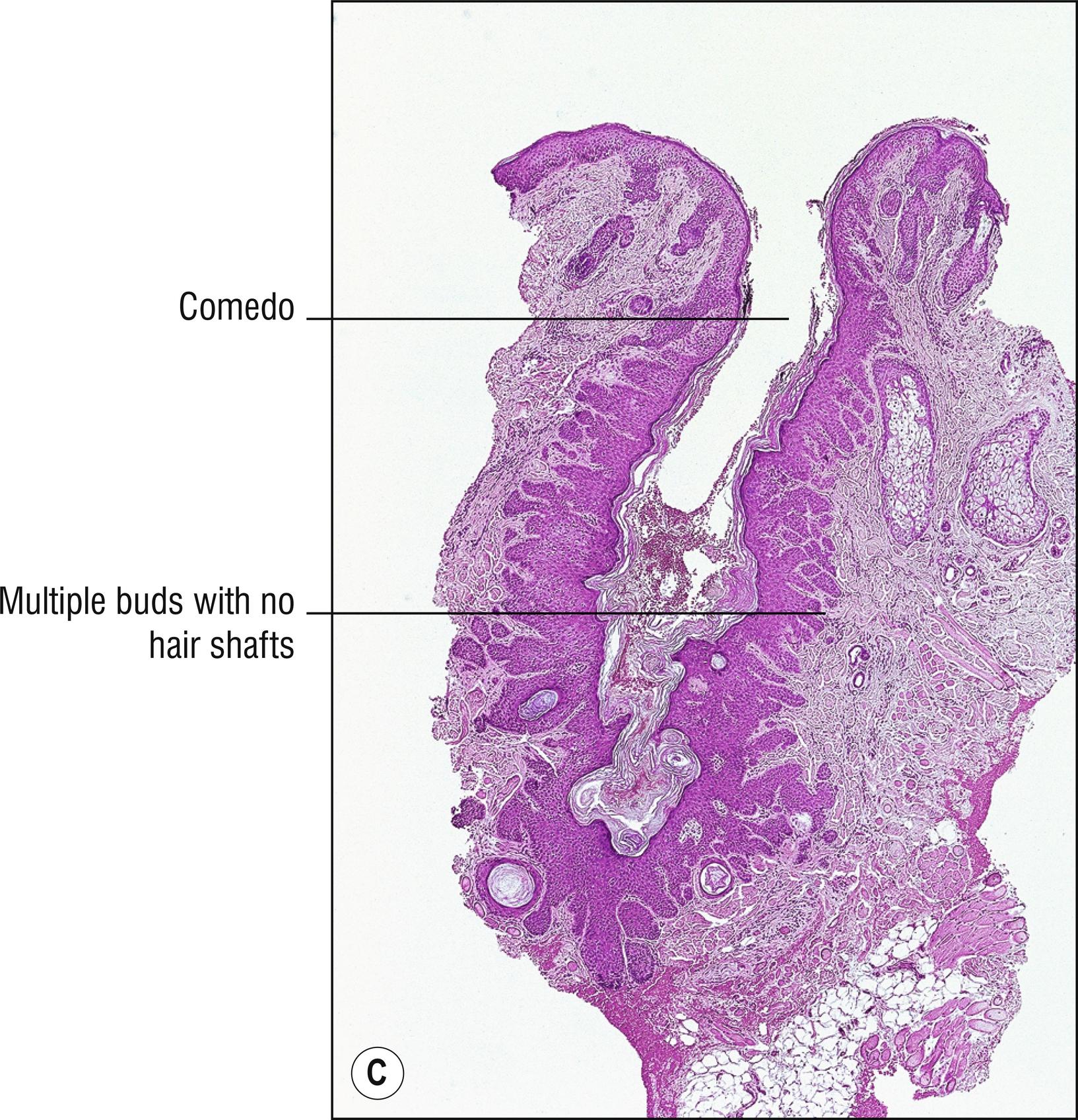
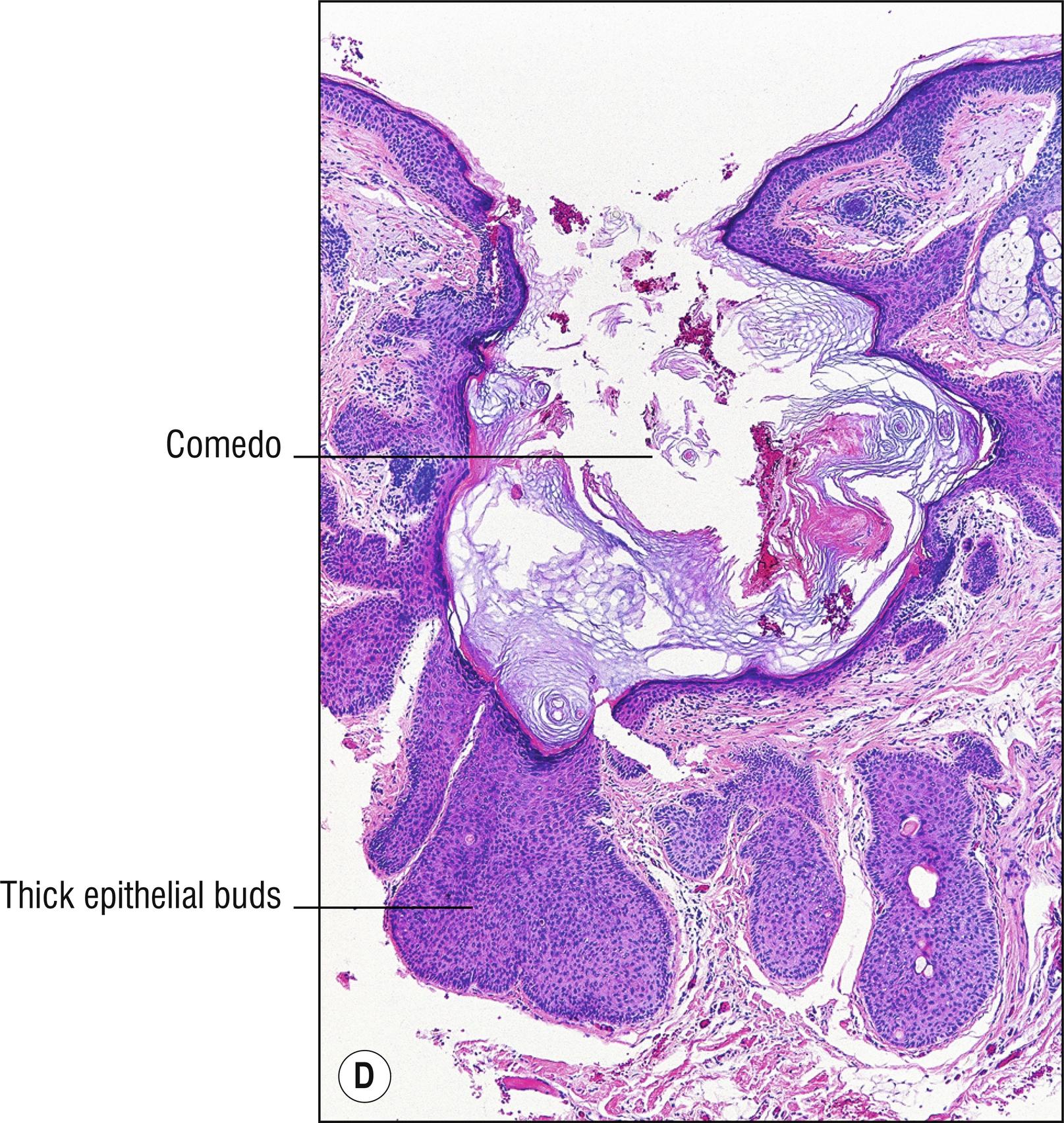
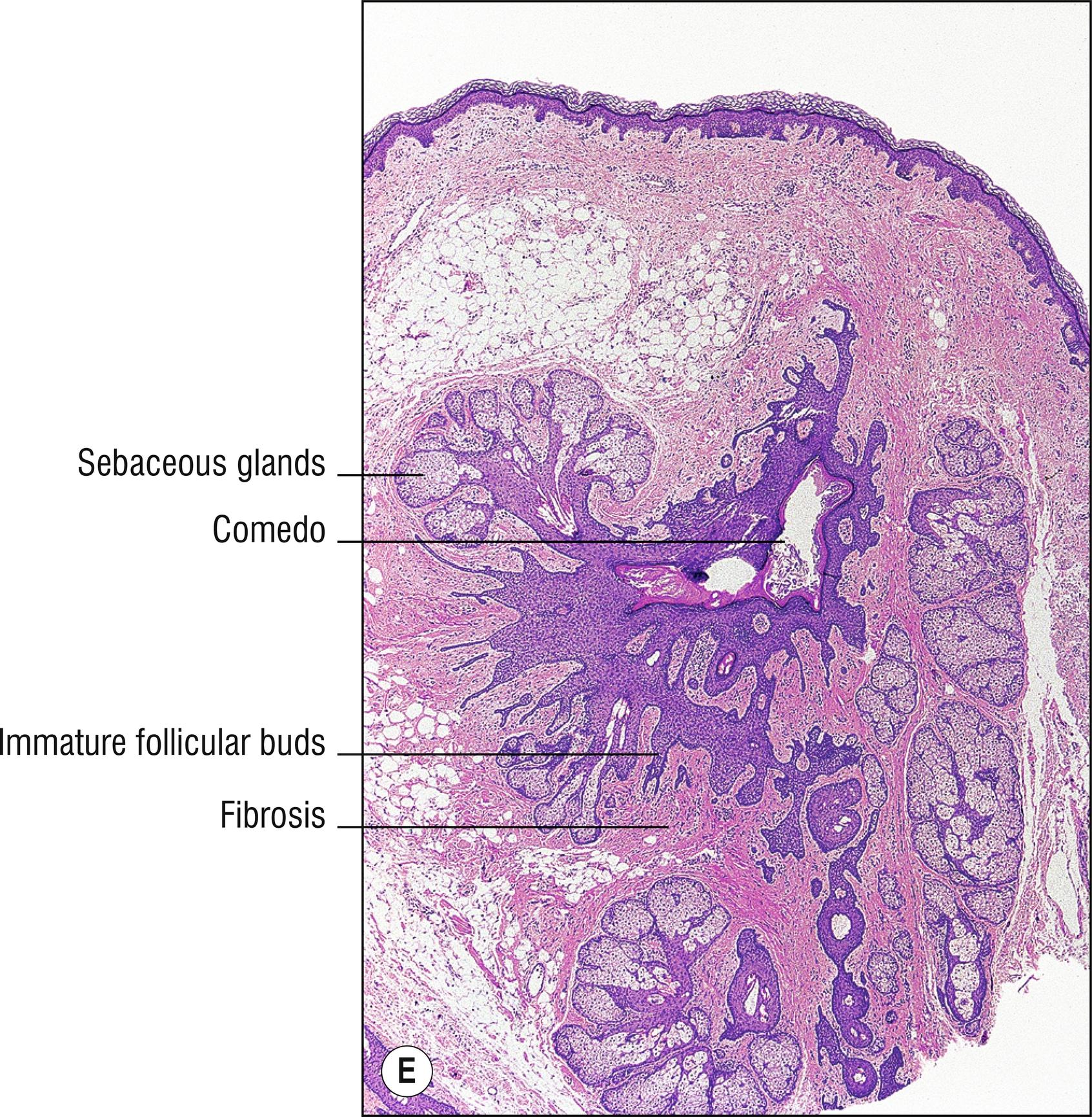
Uncommon solitary papule on the face (1.44), sometimes with a plugged orifice in which vellus hairs are seen.
Large open or closed comedo-like lesion (sometimes resembling a cyst if there is no orifice) into which numerous small hair follicles with trichohyaline granules and vellus hairs open
Fibrotic stroma
Dilated pore of Winer: solitary 1–3 mm orifice on face, buds of epithelium with no associated hair shafts connect into open comedo (1.24).
Pilar sheath acanthoma: usually on upper lip , buds of epithelium from open comedo more massive , without hair shafts in the buds.
Trichostasis spinulosa (10.4): common finding of multiple vellus hairs within a comedonal plug , either as an acneiform clinical condition of open comedones (1.24) or as an incidental histologic finding, not apparent clinically, in many different lesions, particularly melanocytic nevi.
Folliculosebaceous cystic hamartoma (sebaceous trichofolliculoma): sebaceous glands associated with the comedo-like lesion, in adults.
Dermoid cyst (19.3): larger, congenital cyst, with larger hairs and hair shafts.
(see Fig. 22.2A–F )
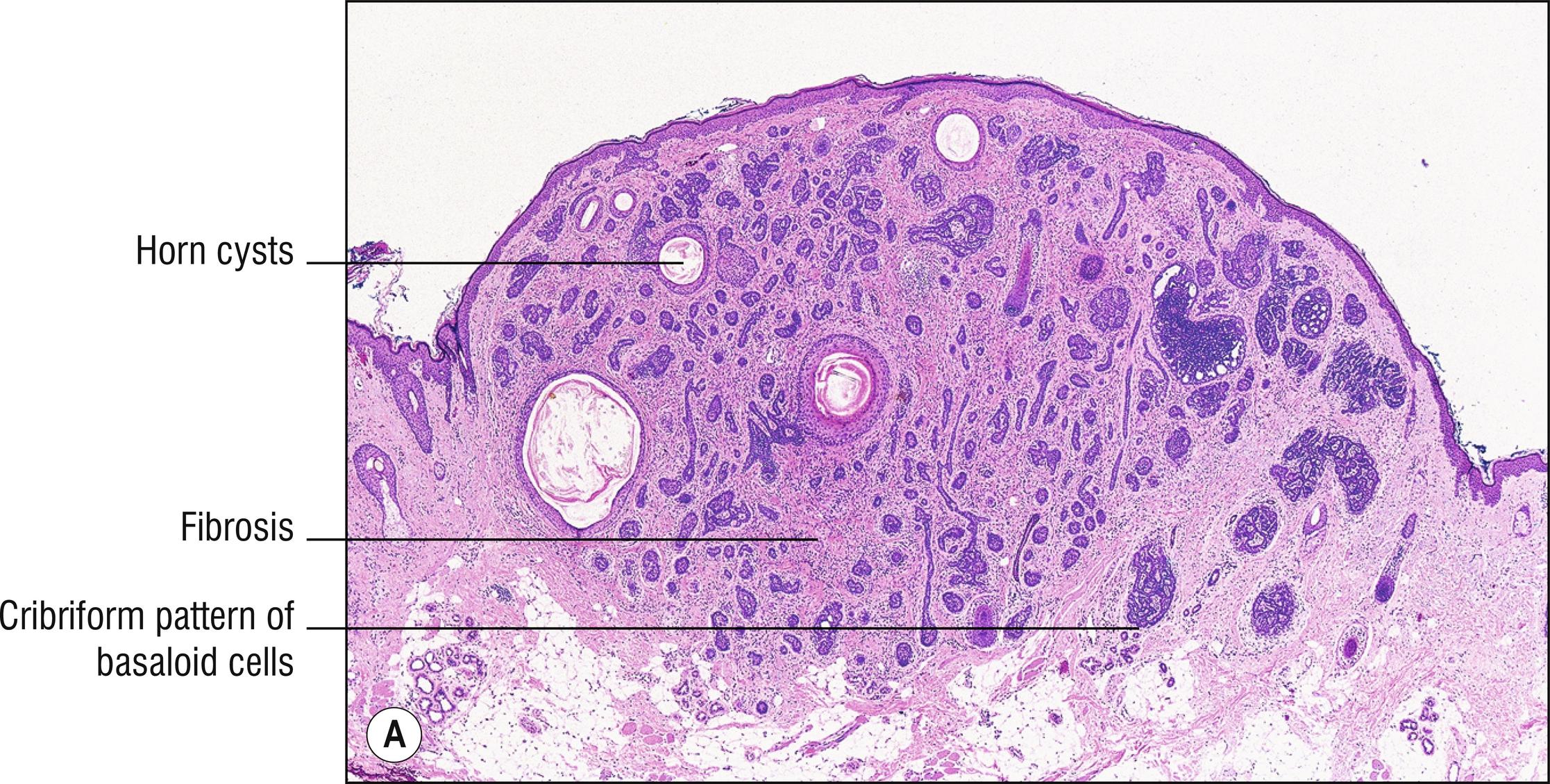
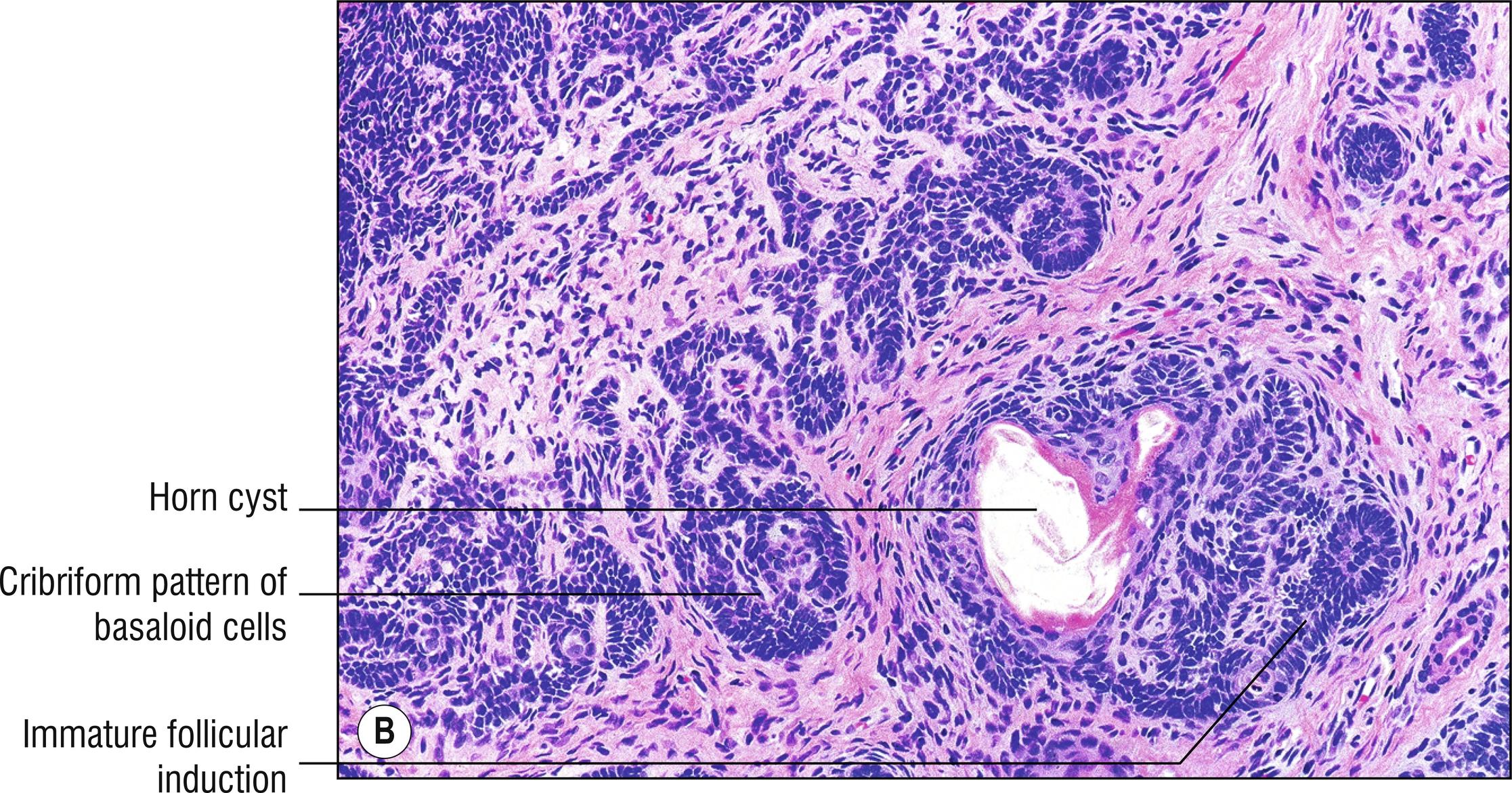
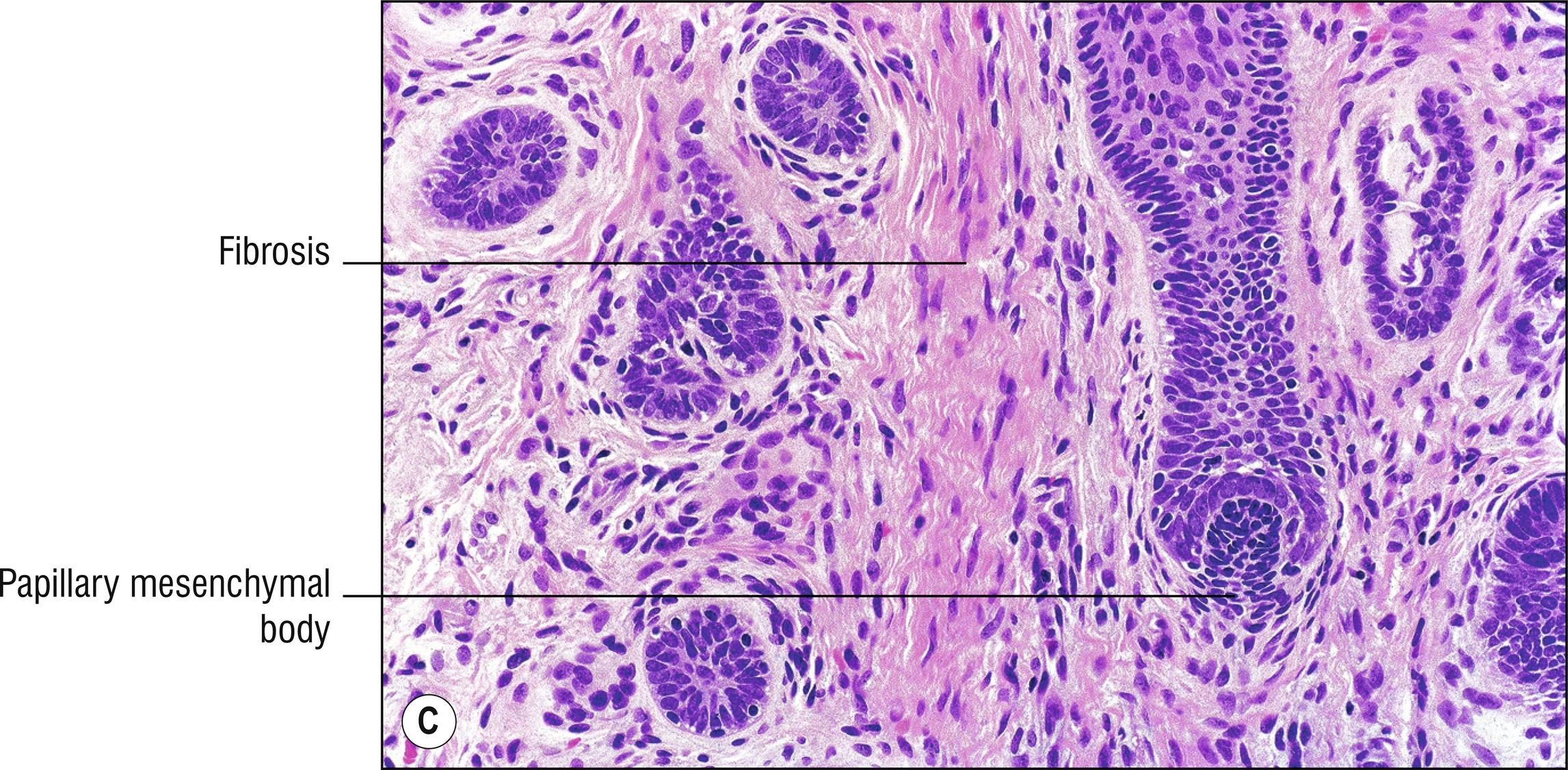



Somewhat common skin-colored papule or nodule (1.129), most common on the central face (1.44). Lesions more commonly are solitary , but multiple trichoepitheliomas with childhood onset may be associated with cylindromas (23.4) and spiradenomas (23.11), inherited as the autosomal dominant Brooke–Spiegler syndrome, related to the CYLD gene mutation. Trichoepithelioma is a benign neoplasm, even though the antiquated word epithelioma usually means low-grade carcinoma. It can sometimes be very difficult to distinguish trichoepithelioma from a basal cell carcinoma (basal cell epithelioma).
Circumscribed basaloid tumor islands , often in a reticulated pattern or cribriform pattern (interconnecting cords), sometimes resembling poorly developed hair follicles
Horn cysts common
Peripheral palisading of nuclei, but no artifactual retraction between tumor and stroma
Loose stroma with many fibroblasts surrounds basaloid islands
Papillary mesenchymal bodies (clusters of fibroblasts adjacent to epithelial buds as in the germinative portion of the normal hair papilla)
Trichoadenoma of Nikolowski: tumor cells are not basaloid and are more squamous like normal epithelium, having more pink cytoplasm and a pale nucleus, horn cysts numerous .
Desmoplastic trichoepithelioma: thinner strands of basaloid cells , horn cysts usually present, resembling a sclerosing basal cell carcinoma.
Basaloid follicular hamartoma: small papules , often multiple, usually on the face, vertically-oriented basaloid cells centered upon a comedo-like follicle .
Multiple facial papules may cause clinical confusion, but are much different histologically: Cowden’s disease (22.5), Birt–Hogg–Dube syndrome (22.6), and tuberous sclerosis (27.3).
Keratotic basal cell carcinoma (BCC, 20.14) or BCC with follicular differentiation is more likely to have a pearly translucent clinical appearance rather than a fleshy papule or nodule with minimal history of growth, solar elastosis, stromal retraction, ulceration, necrosis, fewer fibroblasts in the stroma, less hair papilla formation with papillary mesenchymal bodies, and bcl-2 expression more than just in the basal layer. CK20 positive Merkel cells are more likely to populate a trichoepithelioma than a BCC. CD34 is more likely to stain stroma immediately against the basaloid aggregates in trichoepithelioma, with a rim of sparing around basaloid aggregates of BCC, but this is highly overrated as helpful. Desmoplastic trichoepithelioma is more likely to be p75 +, PHLDA1 +, CK20 + for Merkel cells, and less likely to be CK7 +, CK15 + and androgen receptor positive than BCC. Androgen receptor can be positive in ordinary conventional trichoepitheliomas. Because it may be difficult to be sure of the distinction, a solitary trichoepithelioma in sun-damaged skin is usually best treated as if it were a BCC (when in doubt, cut it out).
Trichoblastoma (22.7): The WHO classification of tumors lumps these lesions together with trichoepitheliomas. Trichoepithelioma can be considered by splitters to be a superficial type of trichoblastoma with a cribriform or germinative pattern.
Microcystic adnexal carcinoma (23.13) is larger and more infiltrating, has sweat ducts in addition to the horn cysts, more likely to be CK7 + and CK15 +.
Other basaloid neoplasms (1.11).
Become a Clinical Tree membership for Full access and enjoy Unlimited articles
If you are a member. Log in here